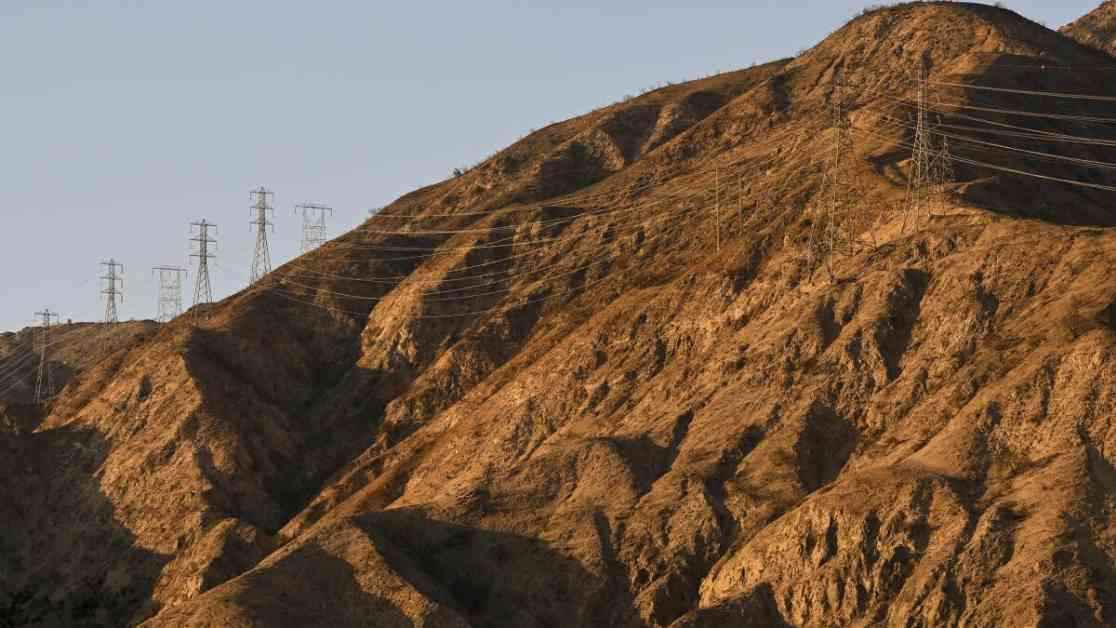In the wake of last month’s devastating wildfires that ravaged Los Angeles, the impact on Southern California Edison has been a topic of intense scrutiny. With accusations swirling that the utility giant may have been responsible for igniting the deadly Eaton fire that swept through Altadena, the future financial implications for Edison hang in the balance.
The key question on everyone’s mind is simple: If Edison’s equipment is found to have triggered the Eaton fire and the company is deemed negligent in preventing it, what will be the financial fallout? The potential billions in losses that could result from this scenario have investors and industry experts on edge, as they await the final verdict from state agencies investigating the cause of the fire.
Edison’s Financial Stability and Preparedness
As concerns mount over the economic repercussions of the Eaton fire on Edison, experts in the field are closely monitoring the utility’s financial stability and readiness to weather the storm. Michael Wara, director of the Climate and Energy Policy Program at Stanford University, poses critical questions about Edison’s ability to handle the financial burden that may arise from the Eaton fire. He raises the issue of whether or not Edison remains a viable investment option in the aftermath of such a catastrophic event.
Edison officials, however, express confidence in the emergency fund created by California lawmakers in 2019 to shield utilities from bankruptcy in the event of wildfire-related losses. Maria Rigatti, the chief financial officer for Edison’s parent company, is optimistic about the fund’s capacity to support the company should it be found liable for the Eaton fire. She highlights the protective measures in place to safeguard utilities from overwhelming financial liabilities, instilling a sense of hope in Edison’s ability to navigate the challenges ahead.
Southern California Edison, a longstanding presence in California’s energy landscape, serves millions of customers across a vast region in Southern California. With its market cap in decline following the Eaton fire, the utility faces mounting pressure to restore investor confidence and secure its financial future amidst the lingering aftermath of the blaze.
Investor Concerns and Regulatory Landscape
The ripple effect of the Eaton fire extends beyond Edison’s financial standing, casting a shadow of uncertainty over the utility’s market performance and investor perceptions. Shahriar Pourreza, an analyst at Guggenheim Partners, underscores the inherent risks associated with investing in utilities, especially in wildfire-prone regions like California. With a history of past fire-related incidents, including the Thomas fire and Woolsey fire, Edison has faced substantial financial obligations to compensate victims and cover damages, putting a strain on its bottom line.
The recent rate hike approved by the California Public Utilities Commission to offset the costs of the Thomas fire underscores the challenges utilities face in reconciling disaster-related expenses with the need to maintain profitability. Shon Hiatt, a professor of management and organization at USC Marshall School of Business, sheds light on the delicate balance utilities must strike to remain financially viable in the face of mounting liabilities.
As Edison grapples with the fallout from the Eaton fire and the looming specter of potential legal battles and insurance claims, the utility’s future hangs in the balance. The interconnected web of regulatory frameworks, investor sentiments, and industry dynamics will shape the path forward for Edison as it seeks to navigate the turbulent waters ahead.
Despite the uncertainties and challenges on the horizon, Edison remains steadfast in its commitment to serving customers, upholding safety standards, and preserving its financial integrity in the face of adversity. As the investigation into the Eaton fire unfolds and the true extent of the damages comes to light, the resilience and adaptability of Southern California Edison will be put to the test, defining its legacy in the aftermath of one of California’s most devastating wildfires.


